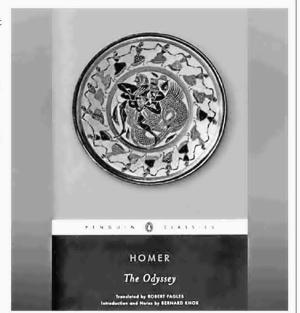Emily Wilson's translation of "The Odyssey" came out in 2018, five years before her translation of "The Iliad," which may seem illogical, since the action of "The Odyssey" follows that of "The Iliad." But "The Odyssey" has always been the more popular of the two epic poems. It's the story of Odysseus's efforts to return home to Ithaca after the Trojan war and the fall of Troy.
Odysseus has been subject of almost as much analysis as Shakespeare's Hamlet. Wilson sees him as an ultra-macho male drawn to spears and other piercing weapons. He seems to need physical danger to live, though he is wily enough to resist the charms of the sirens, lotus eaters and Circe, who changes men into pigs.

Aided by Athena, Odysseus combines strength with guile, diplomacy with brutality, together with a streak of recklessness. He "contains multitudes," writes Wilson. Like her "Iliad," Wilson's translation of Homer's "Odyssey" is divided into 24 chapters, called "books," with book outlines and footnotes at the end of the volume.
Originally written in dactylic hexameter, the text here is in five beat iambic pentameter, the most frequently used line in formal Anglo-American verse. The eye glides down the page, with wide margins on either side, ample enough to permit the student reader to make notes. At 550 pages, the story is about 100 pages shorter than "The Iliad.
" Few books are as well-designed as these. The Trojan War lasted 10 years. The first seven of his voyage home Odysseus spends beguiled by.
















